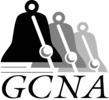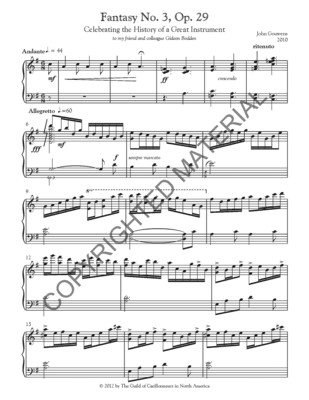
[PDF] Fantasy No. 3 (Gouwens)
Program notes
Fantasy No. 3 draws upon musical elements found in my recent research into the early history of the carillon, and the chimes which preceded the first proper carillon. The earliest record of a melody being used as a voorslag (clock chiming, prior to the hour strike) on tower bells dates from 1479, at Park Abbey at Heverlee (near Leuven – also known as Louvain), where the clockwork played the plainchant "Inviolata, integra, et casta es Maria," the first two phrases of which could be rendered on four bells. Another melody which was frequently employed on bell was the Flemish folksong (actually closely related to melodies sung to other words throughout Europe), "I Saw Cecilia Coming." Settings of "Cecilia" turned up in the 1681 book of music for automatic chiming on the clock in the by Phillip Wyckaert in Ghent, Belgium, in the 1756 collection of music for carillon in Leuven, and once again in a late 19th-century set of variations by Adolf Denyn (father of Jef Denyn). The opening motif is a musical reference to the "ting-tang" (or "ding-dong") figure often used as a simple signal on European clocks preceding the hour strike. Many European and British clocks use that pattern to this day. The ting-tang motif evolves into a short melody, followed by a setting of "Cecilia." A more sedate central section of the piece is a presentation of "Inviolata, integra, et casta es Maria," here using considerably more of the chant than would have been used on the four bells of Park Abbey. The final section begins as a light scherzo in the high trebles, evolving into a Toccata that combines the "ting-tang" figuration, "Cecilia," and some new figurations, for a bold conclusion.
Incidentally, Fantasy No. 1 is the first movement of my Suite No. 1 for carillon (unpublished), and Fantasy No. 2 is an individual piece, published by the GCNA.
—John Gouwens
![[PDF] Fantasy No. 3 (Gouwens) [PDF] Fantasy No. 3 (Gouwens)](https://d2j6dbq0eux0bg.cloudfront.net/images/9481258/984251352.jpg)
